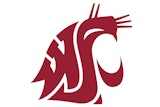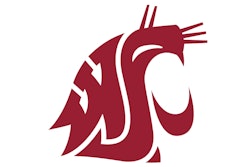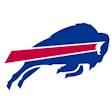Errant balls are a stadium owner's responsibility if fans are presented with too many distractions.
Almost since the beginning of organized baseball, the courts have been asked to determine what duty owners and operators of baseball stadiums owe to people attending the games. In ruling that spectators generally assume the risk of injury when they attend a game, the courts have traditionally held that the danger of errant balls is common knowledge. However, while it may be well established that spectators sitting in unscreened seats assume the risk of injury caused by errant balls, the duty stadium operators owe patrons who leave their seats to purchase food or other merchandise is not as clear. An example of the issues raised in such cases is Maisonave v. the Newark Bears Professional Baseball Club [881 A.2d 700 (2005)]. During a baseball game at Newark, N.J.'s Riverfront Stadium, the Bears' home field, Louis Maisonave left his seat to purchase concessions on the stadium's mezzanine, which is an open walking area exposed on one side to the baseball field. While standing in line, Maisonave was struck in the right eye by a batted ball, causing serious facial injuries.
As a result of his injuries, Maisonave sued the team for negligence, alleging that the team had a duty to protect fans from the dangers of batted balls when they were no longer actively watching the game. In particular, Maisonave argued that although the stadium provided netting to protect the area behind home plate and for some distance down both base lines, the stadium should have located all food and beverage carts behind the protection of the net, since patrons standing in line are not giving the game their full attention.
The suit was dismissed by the trial court, which used the two-pronged limited-duty test established in Schneider v. American Hockey & Ice Skating Center Inc. [342 N.J. Super. 527, 777 A.2d 380 (App. Div.), certif. denied, 170 N.J. 387, 788 A.2d 772 (2001)]. The limited-duty test, which outlines the duty of care stadium owners and operators owe spectators, requires owners and operators to provide enough protected seating to accommodate however many spectators desire such seating, and to provide protection for those areas of the stands where the danger of injury is greatest. Using this test, the trial court ruled that by providing at least two vending carts close to home plate that sat behind protective screening, the owners and operators of the stadium had satisfied their limited duty to Maisonave.
The appellate court, in overturning the trial court, ruled that while operators of commercial sports facilities may owe a limited duty to spectators, that duty changes once a patron leaves his or her seat to purchase food or merchandise. In reaching its decision, the court distinguished between spectators who are paying attention to the game and those patrons, like Maisonave, who are otherwise engaged in another of the stadium's commercial ventures which, by its nature, induces spectators to let down their guard.
On appeal to the New Jersey Supreme Court, the Bears argued that by adding an additional condition to the limited-duty rule, the appellate court unnecessarily placed an undue hardship on stadium owners. In particular, the team argued that the decision was contrary to how courts have traditionally applied the law to such injuries, and would force stadiums into expensive retrofits to meet the new standard.
In examining how other states have addressed the issue of injuries caused by batted balls, the court discovered that courts in about half of the states have previously addressed the issue of what duty owners and operators of baseball stadiums owe their patrons. Of those state courts, 11 - those in California, Iowa, Louisiana, Michigan, Minnesota, Missouri, New York, North Carolina, Ohio, Texas and Utah - have adopted the limited-duty rule. Courts in two states (Colorado and Illinois) have adopted baseball-specific statutes regulating the duty stadiums owe their patrons, while four courts (in Arizona, Florida, Massachusetts and Pennsylvania) have applied traditional negligence principles.
While acknowledging that the limited-duty rule has been criticized by some courts, the New Jersey Supreme Court held that it was not prepared to say that the rule's time has come and gone. To hold owners and operators liable for injuries to spectators in the stands when the potential danger of fly balls is an inherent, expected and even desired part of the baseball fan's experience, the court held, would be unfair. In addition, the court held that forcing stadium owners and operators to guarantee the safety of every fan in the stands from every fly ball would impose an undue hardship. Since the limited-duty rule fairly balances the practical and economic interests of owners and operators with the safety and entertainment interests of fans, the court held that the limited-duty rule was still the law in New Jersey.
As for those injuries in areas outside the stands, the court ruled that a different standard of care may be appropriate. In particular, the court found that as a result of transformations in tort law and the game of baseball, there needed to be boundaries to the limited-duty rule. Specifically, the court noted that since fans attending baseball games are presented with a sensory overload of distractions, the limited-duty rule does not accommodate all the activities that are part of today's game, nor does it take into account that players can hit baseballs harder and farther.
Nothing distinguishes baseball from other businesses, the court concluded, that would justify preferential treatment for stadium owners and operators for injuries that occur in areas outside the stands, including concourses and mezzanines such as the one in Maisonave. Therefore, since it is foreseeable that spectators will let down their guard once they leave the stands, owners and operators have a duty to exercise reasonable care to protect them during such times of heightened vulnerability.
Finally, since the principles of fairness, and by implication public policy, support the application of traditional tort concepts to areas outside the stands, the court refused to expand the scope of the limited-duty rule past its logical and appropriate borders. To apply the rule to the entire stadium, the court held, would convert reasonable protection for owners to immunity by virtually eliminating their liability for foreseeable, preventable injuries to their patrons even when the fans are no longer engaged with the game.
While it is unclear whether the New Jersey Supreme Court decision will have a major impact on stadiums outside of that state, the decision is important for a number of reasons. First, in the 11 states that use the limited-duty rule, Maisonave will be cited in all future lawsuits as the new standard of care stadium owners and operators owe spectators. While the courts in those states do not have to follow the New Jersey court, the decision will probably sway at least one of those jurisdictions to adopt the new limited-duty standard.
Second, while seemingly placing an undue burden on operators of sports facilities, the decision recognizes the fact that the experience of attending sporting events has changed. This is especially true when combined with the earlier decision of the California Court of Appeals in Lowe v. California League of Professional Baseball [56 Cal. App. 4th 112; 65 Cal. Rptr. 2d 105 (1997)]. That court held that as a matter of law, the antics of a team mascot performing in the stands could constitute a breach of duty and negligence, if by distracting fans the mascot increased the risk to spectators of being struck by a foul ball.
People no longer just show up and watch the game; instead, they are not only encouraged to purchase food and engage in other commerce during the course of a game, but are also assaulted with promotions and other distractions. As a result, their attention is often diverted from the field, putting them at a greater risk of being hit by batted balls. Therefore, if owners are going to create an environment that has additional dangers, just for the sake of marketing and sponsorship, they - not the fans - should incur the additional legal risk.
Finally, the court's decision, at least in New Jersey, will require stadium owners and operators to review their existing stadium layouts to ensure that fans at the concessions stands, and other potentially dangerous areas where spectators may be distracted, are protected from batted balls.




































